Elephant News reporter Qiu Yanbo/Wen Duan Jinzhe/Photo
The sculptures of the Fengxian Temple in the Longmen Grottoes are a national project in the Tang Dynasty and also a Tang Gaozong Li Zhi personally grasped the “Tianzi No. 1” project. On July 20, the Longmen Grottoes Conservation Research Expert Symposium was held in the conference room on the second floor of the Longmen Grottoes Research Institute. At the meeting, Ma Chaolong, director of the protection center of the Longmen Grottoes Research Institute, said when reporting the Fengxian Temple protection project that the restoration and protection project revealed the secret of the Fengxian Temple group sculptures more than 1,300 years ago:The body is covered with gold foil, and the eyes are made of glass.
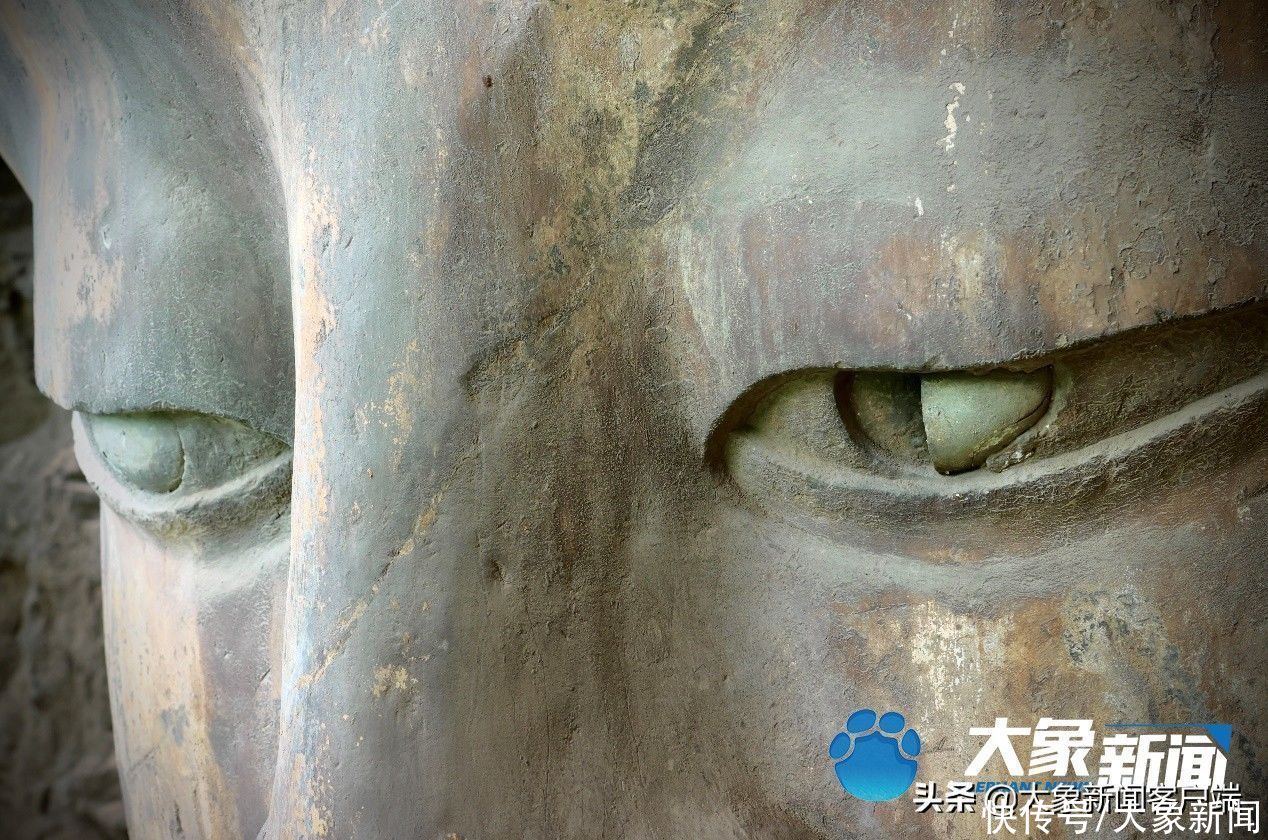
“Tianzi No. 1” project
The Longmen Grottoes were first excavated in the Northern Wei Dynasty and flourished in the Tang Dynasty. The sculptures of Fengxian Temple in Longmen Grottoes are a national project of the Tang Dynasty.

In the early years of Emperor Gaozong of Tang Dynasty, the Fengxian Temple group was carved. As the “Tianzi No. 1” project that Tang Gaozong personally seized, the royal family attaches great importance to it. In 672 AD, Wu Zetian sponsored Zhifen with 20,000 yuan. In 675 AD, the sculpture of the Fengxian Temple with the Lushena Buddha as its main Buddha was completed. On the day of completion, Wu Zetian personally led the civil and military officials to participate in the consecration ceremony of Lusena, and played drums and drums on the east bank of Yishui, which shows the importance the royal family attached to this national project.
Fengxian Temple is the most representative work in the Tang Dynasty sculpture art in the Longmen Grottoes.
Some experts say that the magnificent style of the Fengxian Temple group sculptures reflects the powerful material and spiritual power of the Tang Dynasty, and has become a model of Eastern Buddhist art and stone carving art. It is the highest peak of Chinese Buddhist sculpture art and has eternal artistic charm and aesthetic value. In this sense, the “Tianzi No. 1” project is also worthy of its name.
painted in colorful clothes and covered with gold foil
Director of the Conservation Center of Longmen Grottoes Research Institute Ma Chaolong said that during the implementation of the protection project of Fengxian Temple, through close observation, the staff had green, red and purple painted pigments on the hair crowns and clothing patterns of the nine statues. After testing, it is painted in ancient times.
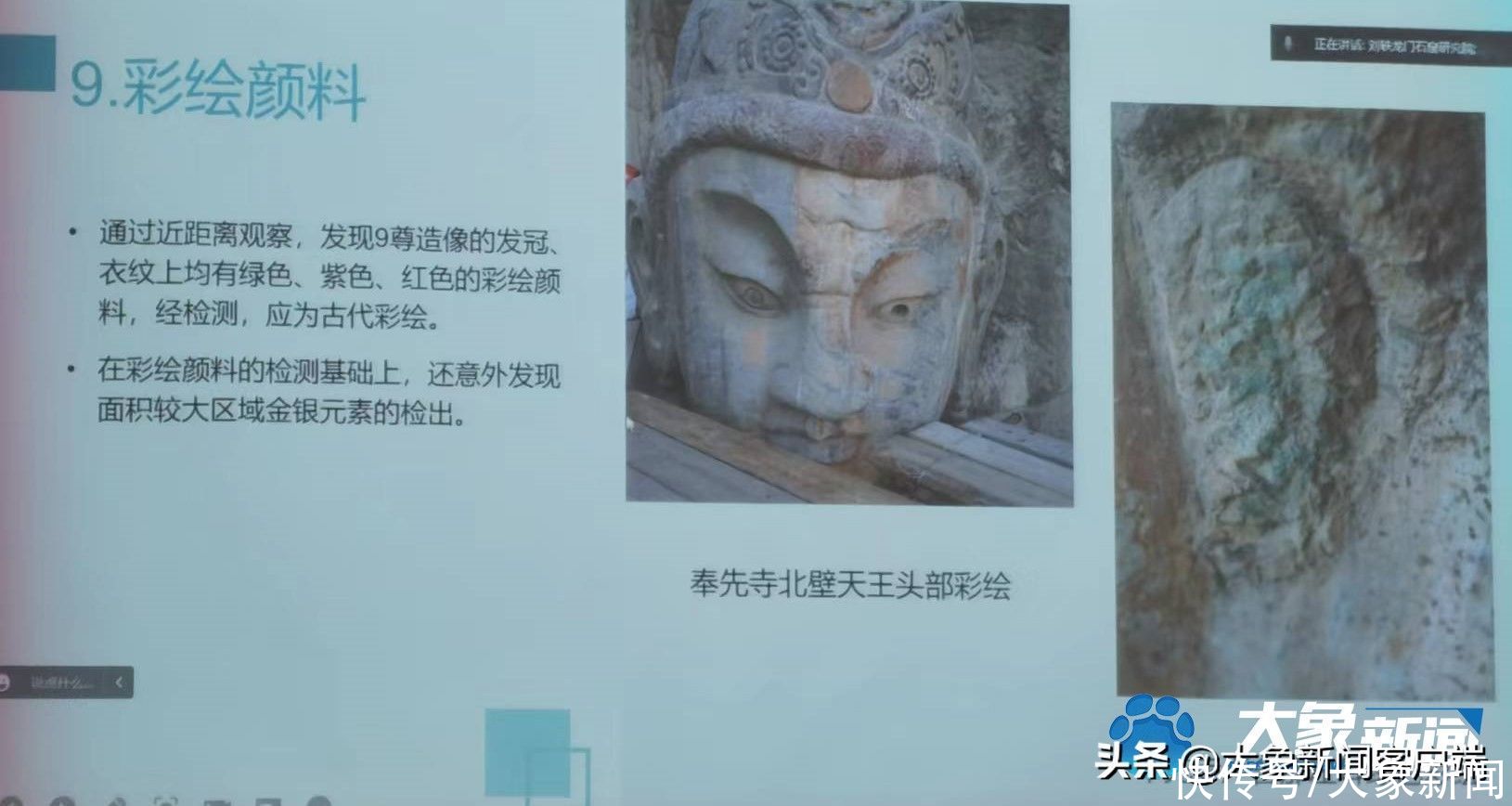
Based on the detection of painted pigments, the staff placed , the face of Samantabhadra Bodhisattva, the right side of Manjusri Bodhisattva’s hair crown, and the front of Tianwang’s hair crown on the north wall were detected gold and silver elements.
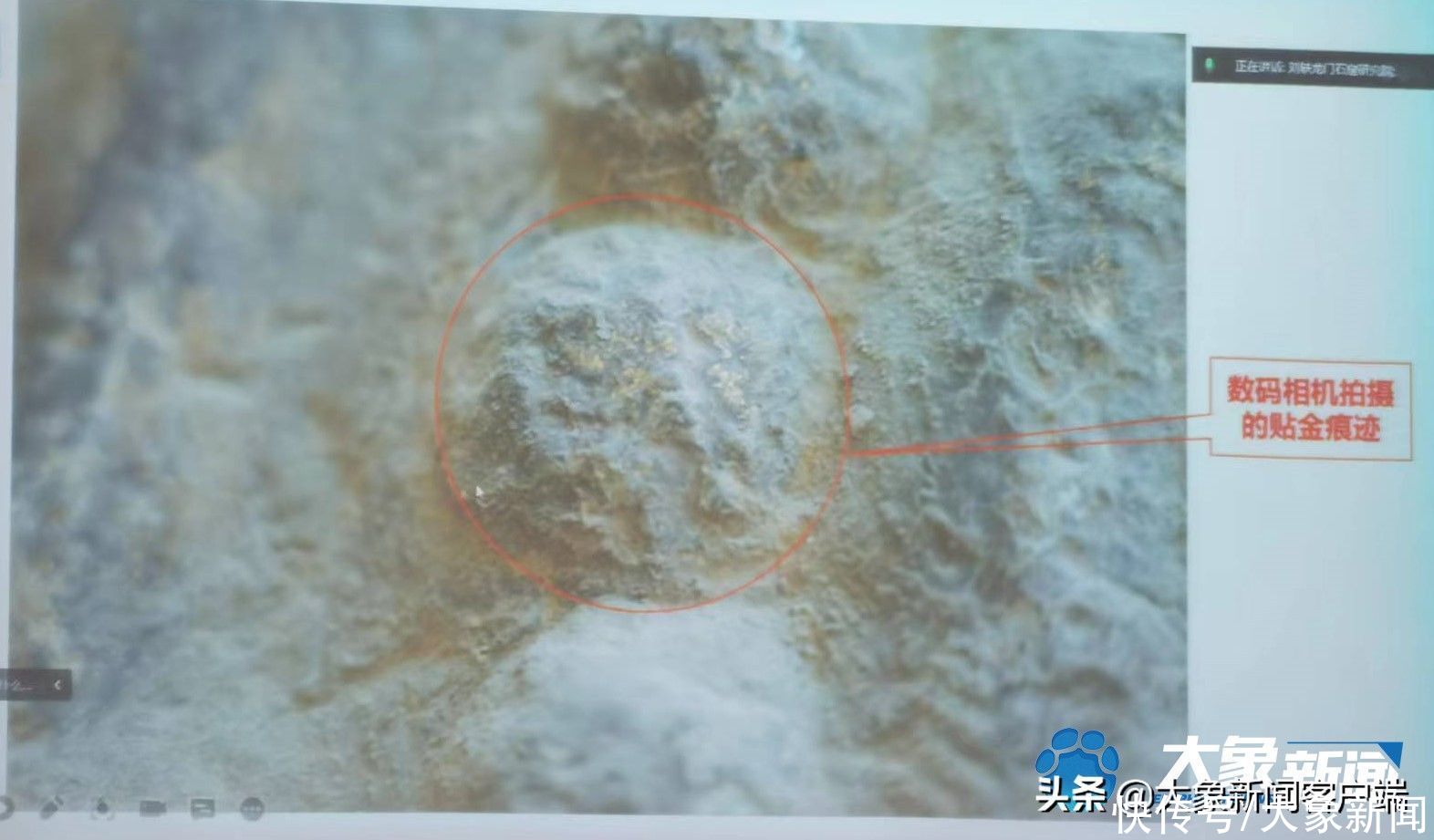
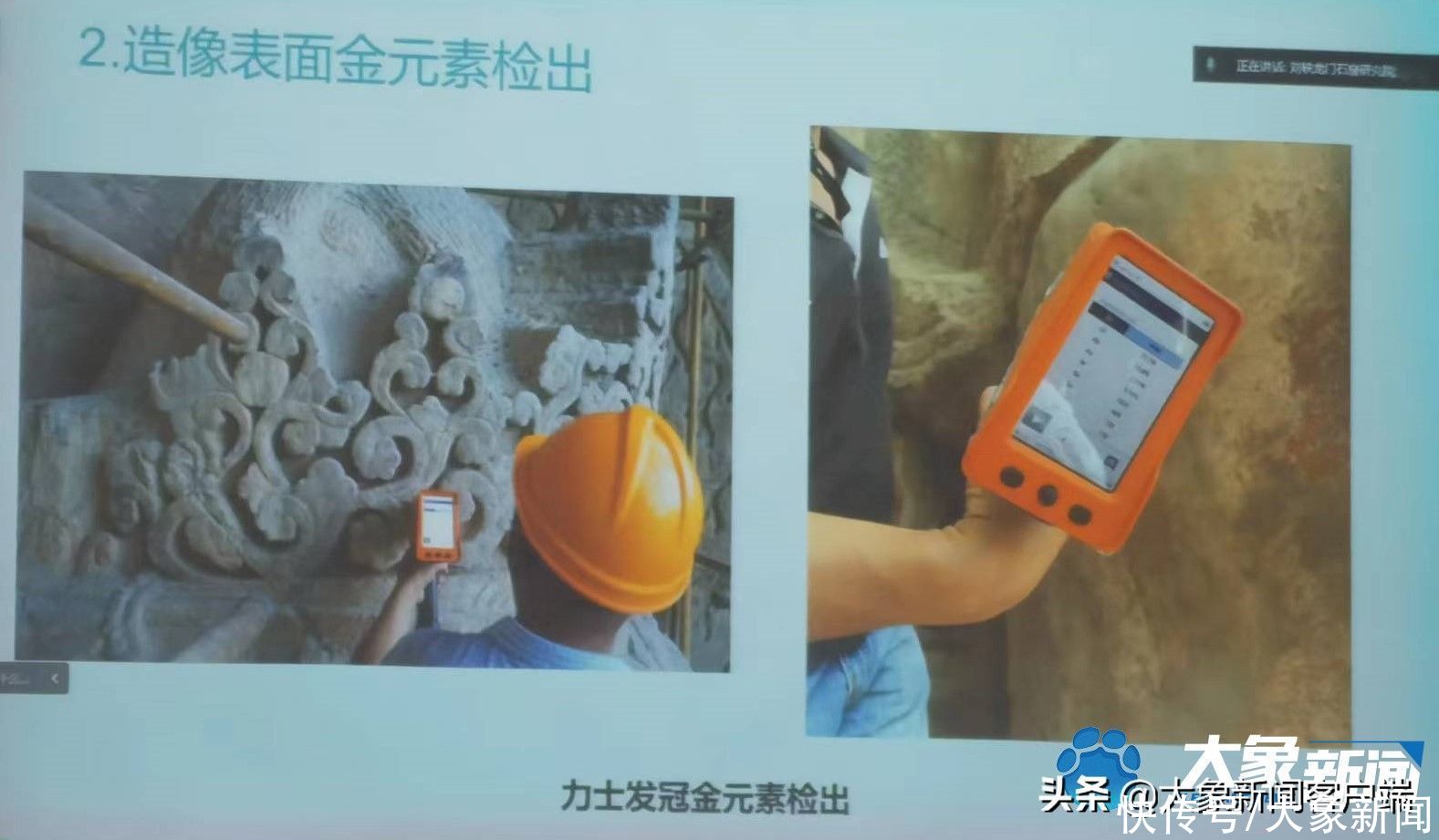
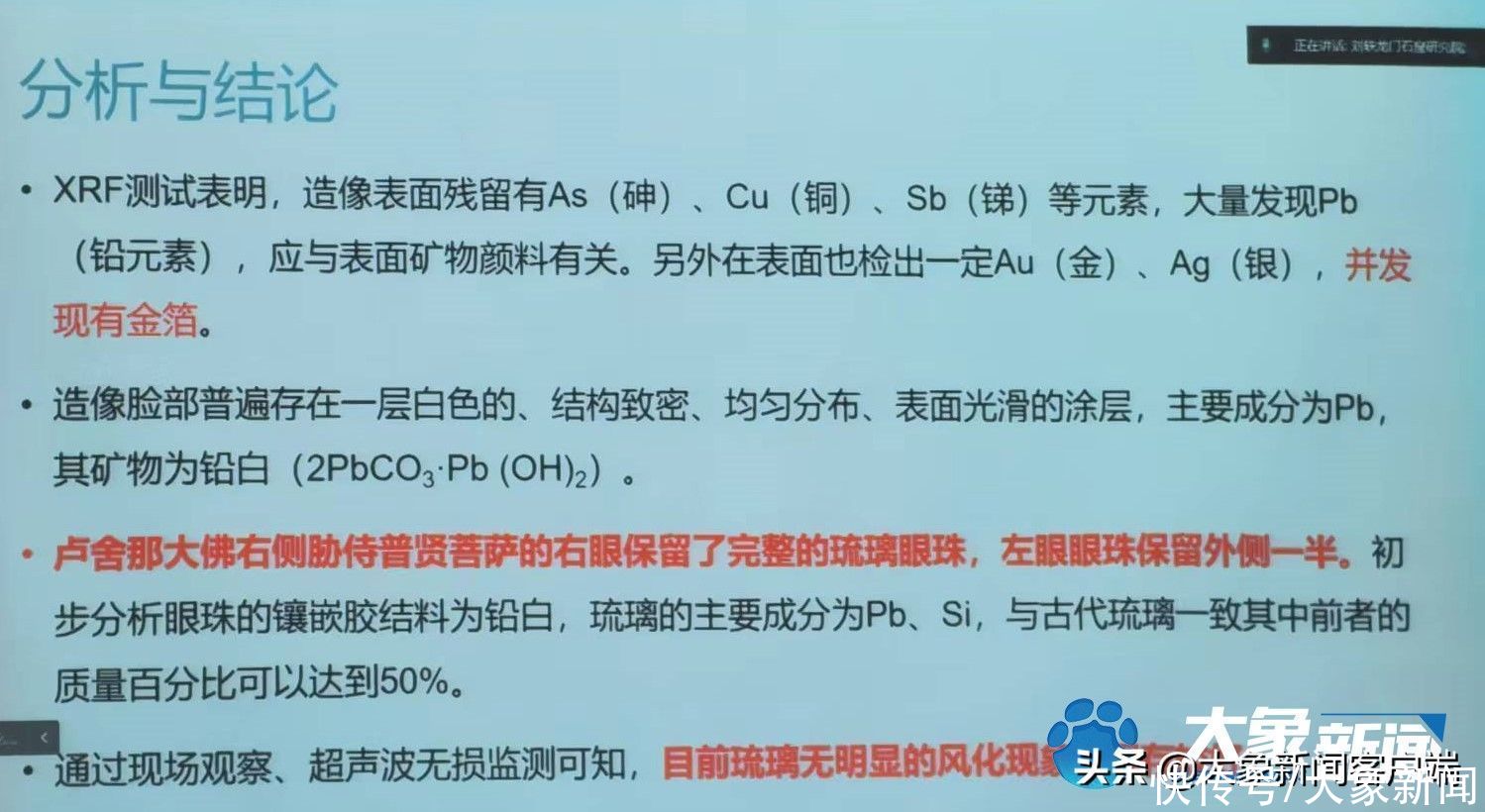
Experts say this shows that the statue was completed before the At that time, it is very likely that he was painted in colorful clothes and covered with gold leaf.
Glass eyes, so far so good
In the process of close observation, the work The right eye of Puxian Bodhisattva on the right side of the Lushana Buddha was kept intact, and the left eyeball was half of the outer side, and the surface was covered with weathered objects.
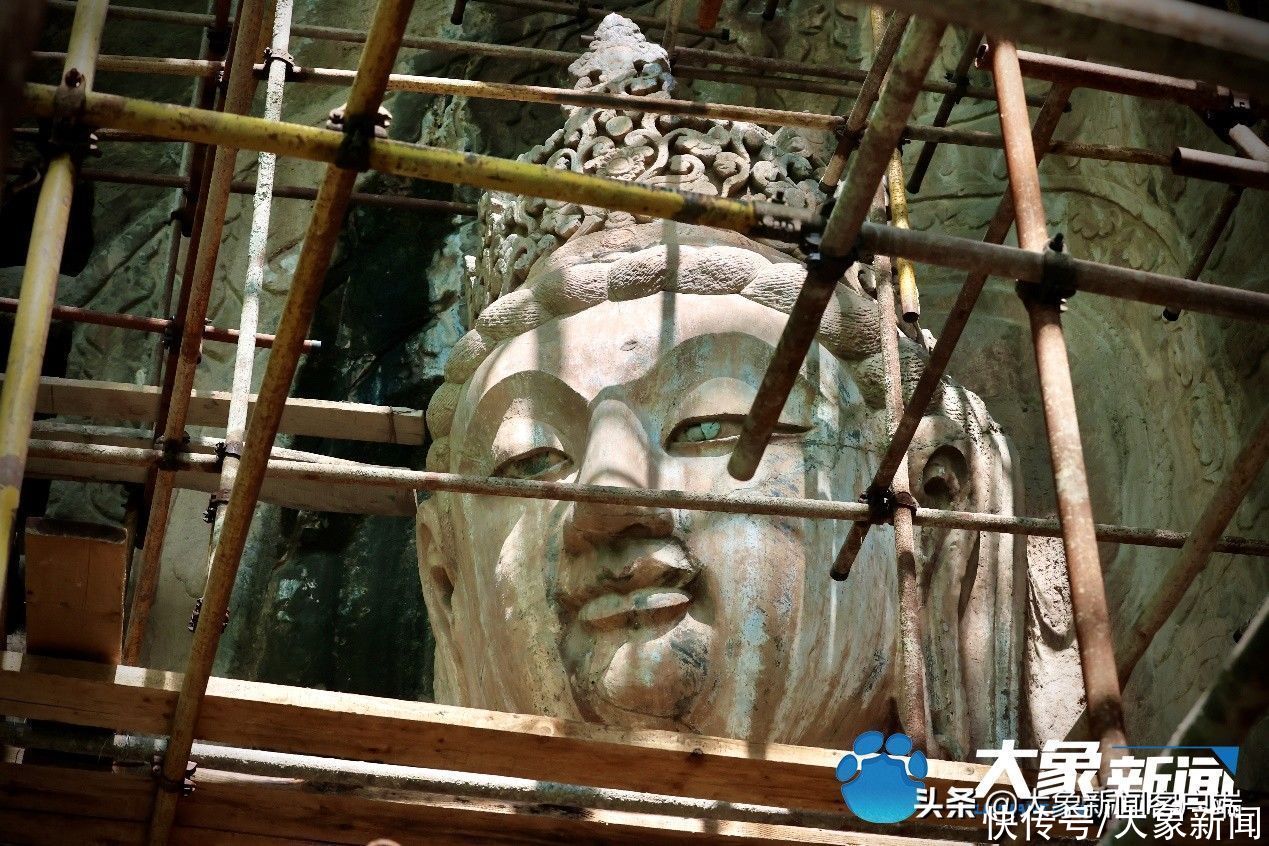
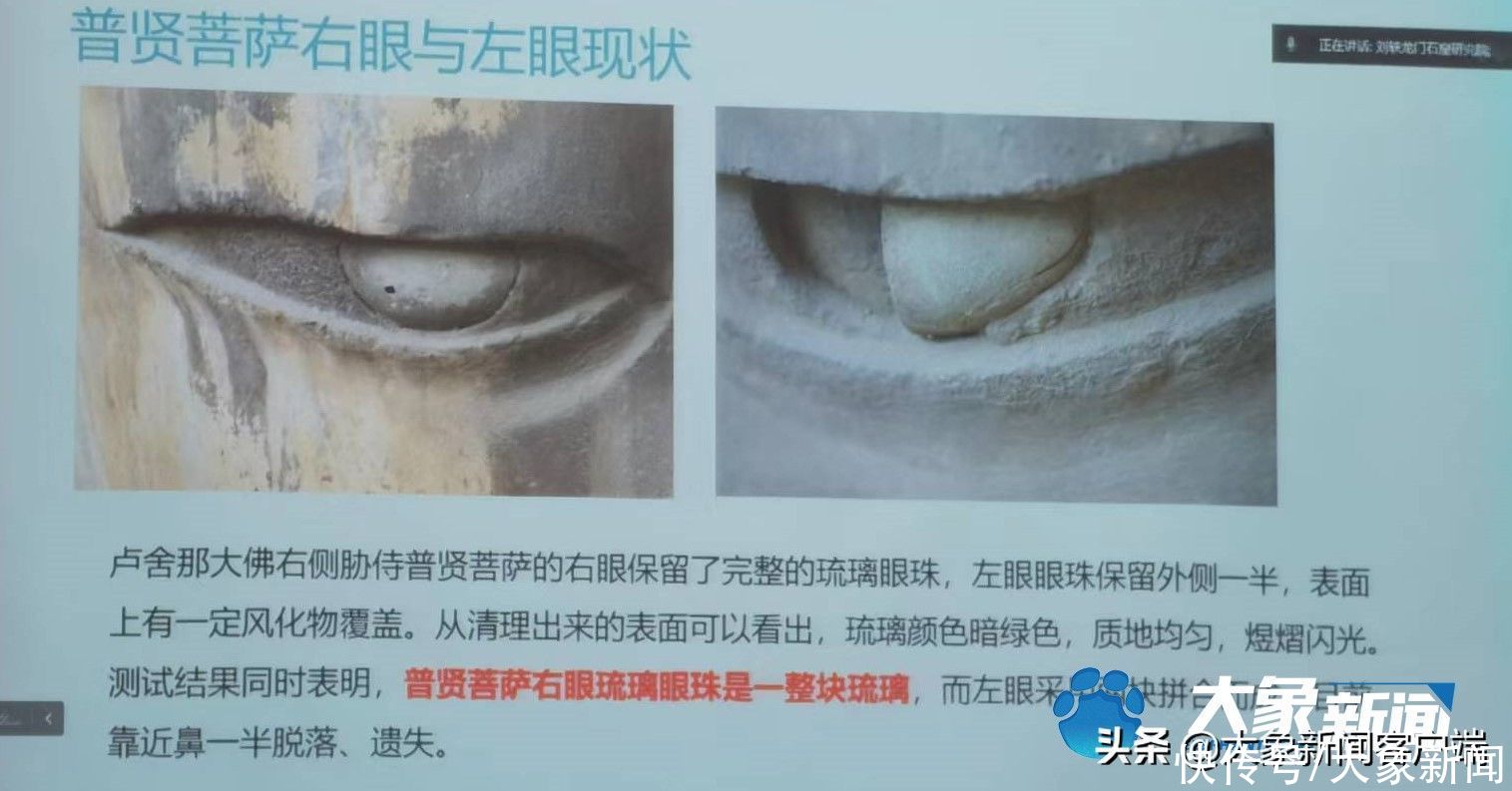
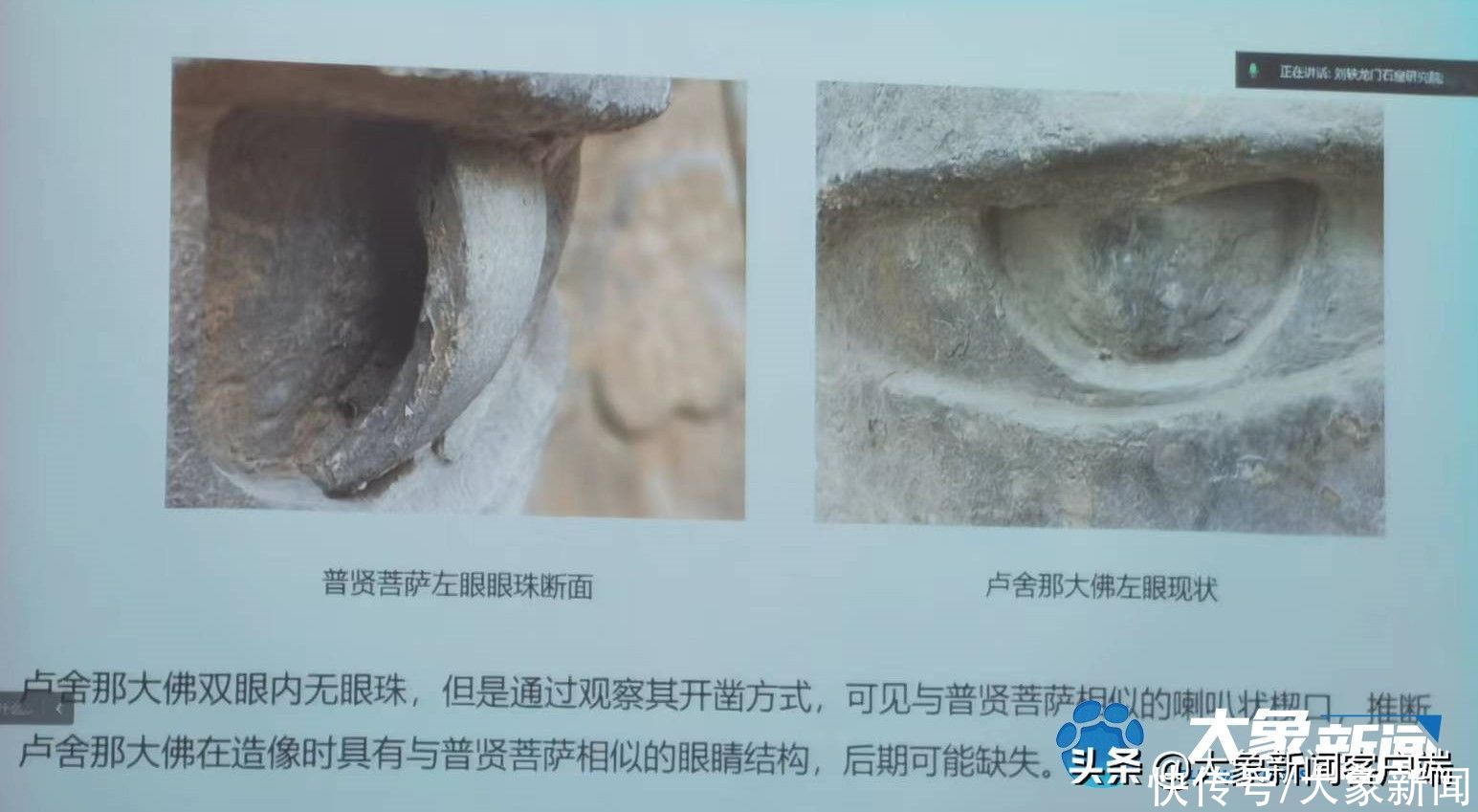
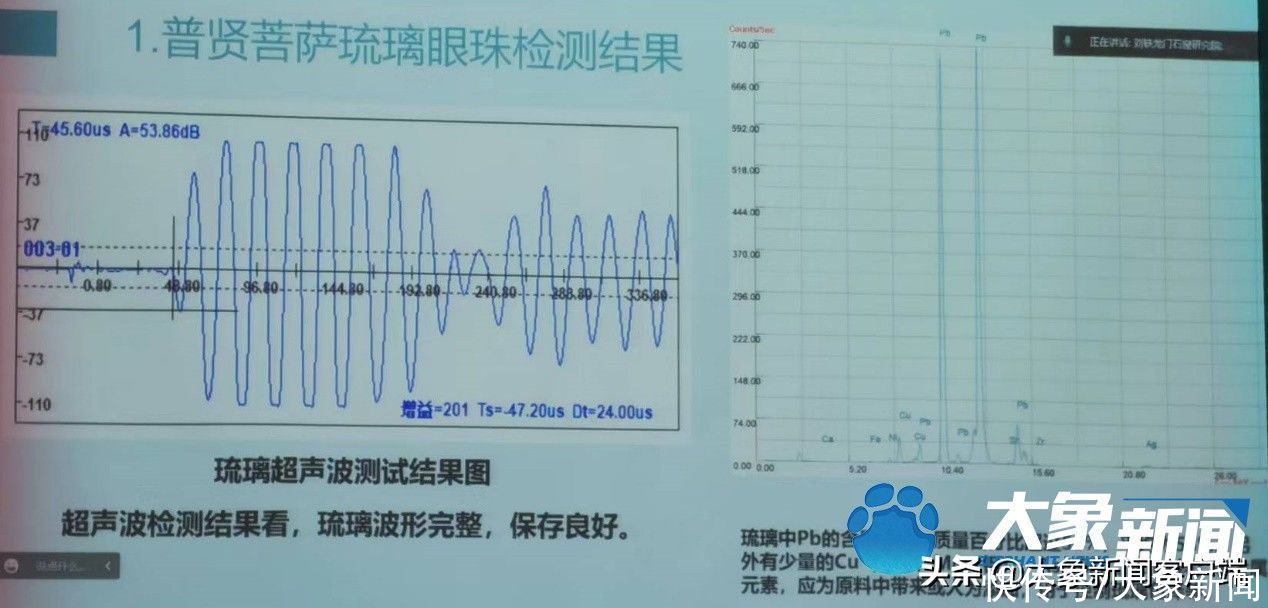
“green, followed by The color of the beer bottles is similar.” On July 20, a staff member in charge of construction safety on site said.
According to preliminary analysis by researchers, the inlaid cement of eyeballs is lead white, and the main components of colored glaze are the same as those of ancient colored glaze. Through on-site observation and ultrasonic non-destructive testing, it can be seen that there is no obvious weathering phenomenon and the glass is well preserved.
Archaeologists found that there are no eyeballs in the eyes of the Buddha, but it has a trumpet-shaped wedge-shaped mouth similar to Puxian Bodhisattva. Based on this, it is inferred that the Buddha was in the statue. It has an eye structure similar to Samantabhadra Bodhisattva, with colored glass eyes, which may be missing due to various factors later.